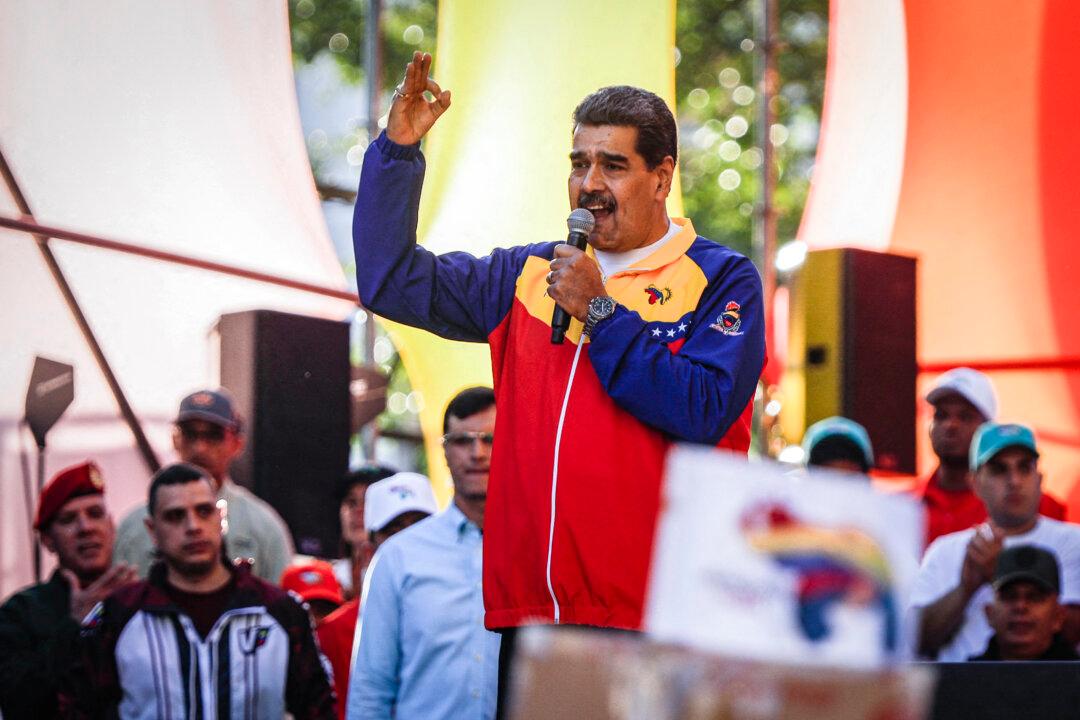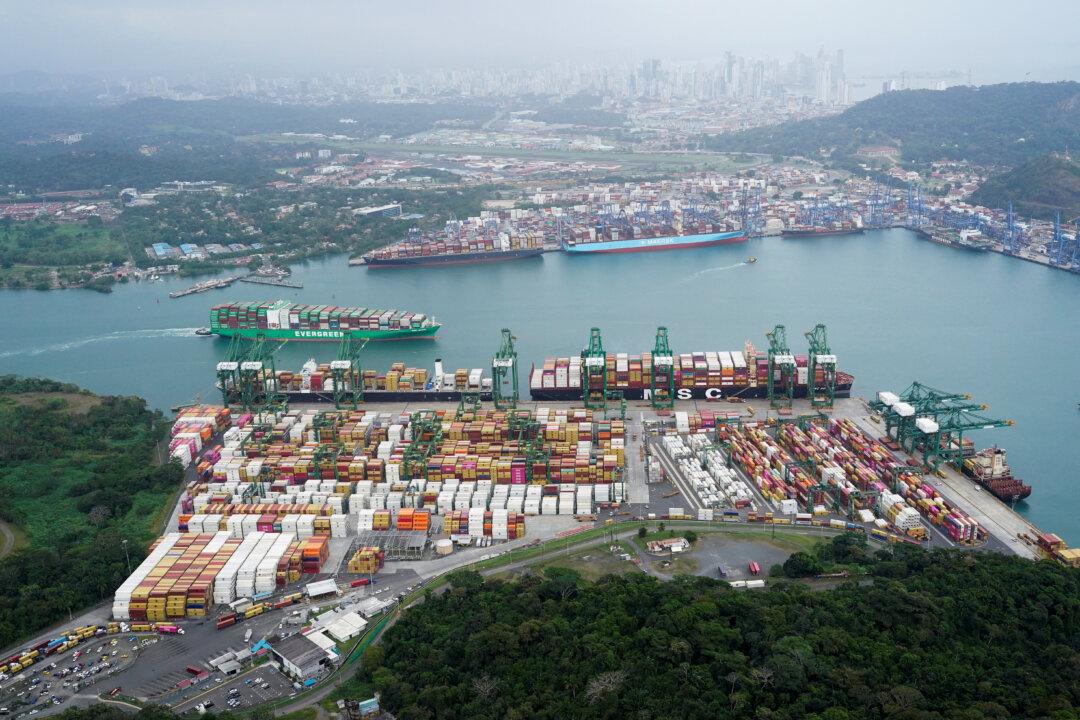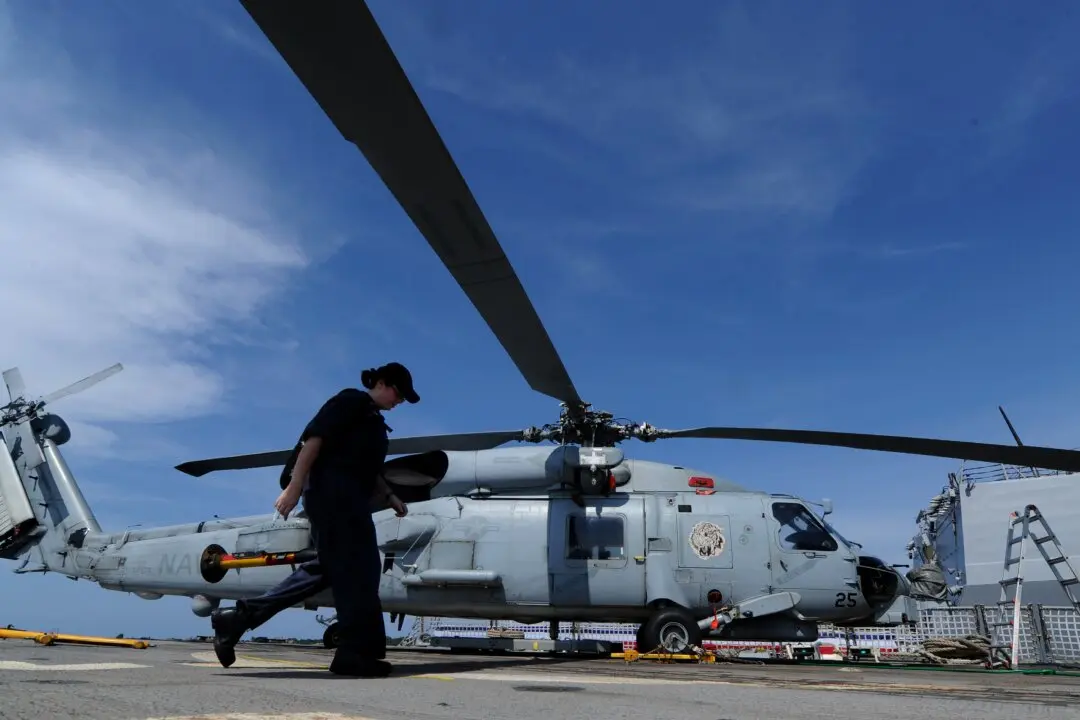Venezuela’s revival of its border dispute with the Cooperative Republic of Guyana may provide an opportunity for the AUKUS pact—Australia, the UK, and the United States—to reverse or challenge the gains of China, Russia, and Iran in South America and the Caribbean.
The territorial dispute over the Essequibo region of Guyana extends back to 1840, ostensibly resolved with the Paris Arbitral Award of 1899. However, it was revived with the discovery of massive energy reserves off its coast in the early 21st century.
This was exacerbated by Venezuela and its allies in 2022–23 for various reasons and in ways that broke with years of bilateral and multilateral agreements and negotiations between the two states.
The U.S. Southern Command has the new dispute on its radar, and the UK government and the Commonwealth have been stirred to action. As of early December, the Southern Command had begun conducting joint flight operations with the Guyana Defense Force, sending a message to Venezuela. Meanwhile, U.S. Secretary of State Antony Blinken told Guyana President Mohamed Irfaan Ali that the United States would support “Guyana’s sovereignty and our robust security and economic cooperation.”
Venezuelan leader Nicolás Maduro criticized Guyana for involving the United States, even knowing this was an inevitable consequence of the Venezuelan military buildup on Guyana’s border.
Several major U.S. energy firms also have a stake in the outcome, given their participation in one of the largest new petroleum fields in the world.
And yet it’s Beijing and Tehran that have worked with the Venezuelan government to escalate the crisis to the point of conflict in order to pull U.S. forces away from buildups in the Indo-Pacific, which challenge, separately, China’s People’s Liberation Army (PLA) expansion and Iran’s security as Israel and the United States move against Iranian military adventurism.
Communist China has, for the past few years, worked consistently to keep U.S. and UK forces locked into the Euro-Atlantic and has benefited from the Russia–Ukraine war, the Israel–Hamas war, and the feints of Chinese basing in the Atlantic, along with attempts to push Argentina into threatening war again over the Falkland Islands.
The prospect of U.S. and UK military engagement to support Guyana is real. While it does indeed promise to keep its forces out of the Pacific—to the benefit of China—it also offers a chance for the UK to demonstrate its commitment to a Commonwealth ally and for the United States, in particular, to clear Beijing’s influence out of the Caribbean basin, where it has become pervasive. It could also be a test of the AUKUS alliance in that Australia would need to show that it’s as committed to the alliance’s interests outside the Indo-Pacific as well as in it and that it recognizes that the alliance’s conflict with China is global.
The sudden reemergence of the prospect of imminent military conflict, then, between Venezuela and neighboring Guyana is more a reflection of the broader strategies of China and Iran rather than a reflection of the 1899 Paris Arbitral Award that it claims to be. Yes, there is a genuine component of Venezuelan nationalism and competition for territory now that Guyana’s oil and gas reserves in the disputed region are known to be among the most significant in the world.
The fact that Venezuela faces a presidential election in 2024 is also significant and requires Mr. Maduro to campaign on nationalist lines and the promise that the new energy discoveries would revive the economy. But Venezuelans know that the extensive national energy reserves—largely heavy petroleum rather than the light crude of the new Guyana deposits—have been poorly managed by the Maduro regime and have yielded little to the Venezuelan voters.
Even by its Central Bank estimates, Venezuela has inflation running at more than 280 percent in 2023, although that figure understates the real hollowing of the national economy.
In the midst of all this, on Dec. 10, Mr. Ali, 43, and Mr. Maduro agreed to meet in St. Vincent and the Grenadines on Dec. 14 to discuss the issue of the disputed territory in the Essequibo region—after considerable pressure from Brazil, the Caribbean Community (CARICOM), and the Community of Latin American and Caribbean States. The matter is already before the International Court of Justice (ICJ), and Mr. Ali (People’s Progressive Party/Civic) said he would abide by the ICJ ruling and not succumb to threats from Venezuela.
Mr. Ali on Dec. 12 wrote to Ralph Gonsalves, prime minister of St. Vincent and the Grenadines, to firmly outline the discussions that are about to take place in Kingstown, St. Vincent, in which the Guyana president expected that CARICOM would stand by its support for Guyana, and reiterating that the talks would not be about a resolution of the border claims by Venezuela, noting that these had already been arbitrated and that there was no valid dispute over the offshore territorial waters of Guyana, referencing the Stabroek Block, some 120 miles offshore Guyana (and therefore within its exclusive economic zone/EEZ).
The issues of the actual case, however, are secondary to the global geopolitical reality that both China and Iran have been seeking to remove U.S. and Western military pressures on them. China has been seeking to keep the United States, in particular, engaged in the Euro-Atlantic space and unable to deploy forces to the Indo-Pacific and has thus supported the ongoing conflicts between Russia and Ukraine and Israel and Hamas and has attempted to prod Argentina into reviving a military threat to Britain’s continued possession of the Falkland Islands in the South Atlantic.
In the Venezuela–Guyana context, China and Iran, along with Russia, are the primary allies of Venezuela and clearly have been preparing for some time to push the Guyana land claim to the point of conflict, including the postulated Venezuelan military invasion of the Essequibo region of Guyana. Venezuelan troops are already deployed on the border of the Essequibo region, which is on the western bank of the Essequibo River, which splits Guyana.

In the offshore territorial waters and economic zone related to the Essequibo region, U.S. oil producer ExxonMobil has discovered nearly 11 billion barrels of oil in the area since 2015, making it one of the largest finds of the 21st century. The oilfields of the offshore Stabroek block produce more than 500,000 barrels daily. And ExxonMobil is just one of the petroleum companies exploiting the Guyanese oilfields off Essequibo. Exxon owns 45 percent of Stabroek; Hess, which Chevron is buying, owns another 35 percent; China’s CNOOC holds the remaining 20 percent.
China would fare well, possibly better than now, if the Essequibo land grab (and sea grab) was successful for Venezuela, but the U.S. companies would be at risk. Logically, then, the U.S. government would be seen to be forced to defend Guyana’s position, if only to protect U.S. economic interests.
Venezuela has more than 300 billion barrels of oil reserves, which is now dwarfed by its previously insignificant neighbor. Venezuelan state oil company PDVSA theoretically has the expertise to exploit the Stabroek block but would need investment. Its nationalization of the energy industry has also meant that its energy management has become a political tool, generating funds for the military but not the nation. Venezuela could count on some expertise from U.S. oil companies, such as Chevron, which operates with PDVSA, exporting an average of 124,000 barrels daily from Venezuela.
So the situation becomes complex.
In Venezuela’s 2024 presidential election, Mr. Maduro was slated to compete with Maria Corina Machado, an economic conservative and member of the opposition party in the Venezuelan National Assembly. However, Ms. Machado has been disqualified from holding public office because of her support for U.S. sanctions against the Maduro regime. The U.S. government has stated that sanctions wouldn’t be lifted unless the opposition parties could participate in the elections.
While Mr. Maduro’s election victory would be seen as hollow if there was no credible opposition candidate, it’s questionable whether China, Russia, and Iran would be disheartened if Mr. Maduro resisted U.S. sanctions threats. They (and Caracas) anticipate that Venezuela would, in the future, be able to trade within the new trading bloc outside the U.S. dollar zone and as part of the enlarged BRICS (Brazil, Russia, India, China, South Africa) group.
The growth of the nondollar trading bloc has mainly resulted from national leaders wanting to remain outside the threat of U.S. sanctions—a trend that has largely seen the end of the efficacy of sanctions as a viable weapon in U.S. strategic warfare.







